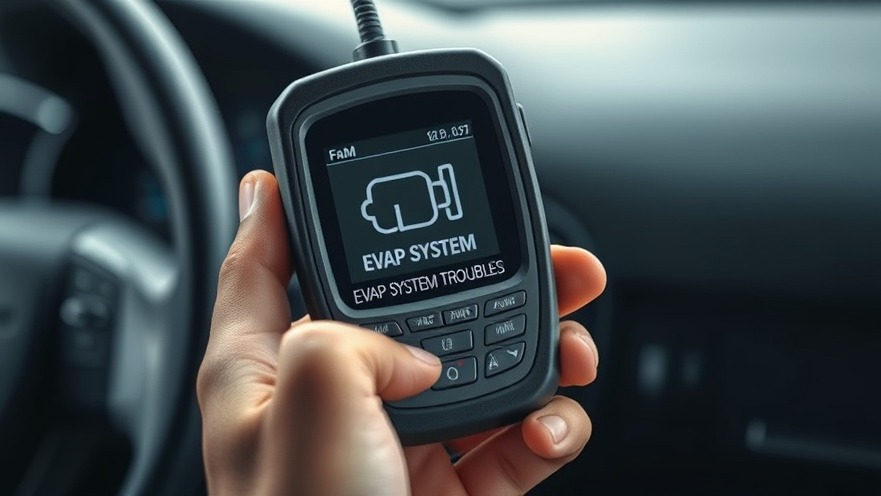
Understanding Your Check Engine Light: What It Really Means
Many vehicle owners often overlook the warning flags from their cars, especially the check engine light. When this light stays illuminated, it’s a sign that something isn’t quite right. Interestingly, a faulty light wouldn’t stay on; instead, it indicates a real issue needing attention. Ignoring these signals could lead to more significant problems down the road. The first step is to investigate why it’s on by using a scan tool to pull diagnostic codes, which can point you in the right direction.
In 'P0456 and P0448 - EVAP System Troubleshooting Blues in Your Car or Truck', the discussion dives into the intricacies of the EVAP system, exploring key insights that sparked deeper analysis on our end.
Decoding the P0456 and P0448 Codes
In the video titled "P0456 and P0448 - EVAP System Troubleshooting Blues in Your Car or Truck", significant diagnostic trouble codes (DTCs) were highlighted: P0456 and P0448. The P0456 code indicates a tiny leak in the EVAP system, while the P0448 code suggests there’s a shorted vent control circuit. Both of these faults can contribute to your vehicle not functioning correctly and may even affect your fuel efficiency.
A deeper understanding of your car’s EVAP (Evaporative Emission Control) system reveals two crucial components: the purge valve and the charcoal canister. The purge valve allows fuel vapors to be burned in the engine. In contrast, the charcoal canister filters these vapors and safely vents them into the atmosphere. If either system malfunctions, it could lead to a stinky situation where fuel vapors are escaping.
Common Causes of EVAP System Failures
One of the major reasons for a malfunctioning EVAP system is overfilling your fuel tank. If you pump too much fuel and it flows into the charcoal canister, it can become damaged. Since the canister is meant to filter and store vapors, the introduction of liquid fuel makes it work improperly.
Damage to electrical components can also lead to coding issues. This damage may occur due to rodents chewing through wires or rubber connectors degrading over time. Regular inspection of these components can help maintain good EVAP functionality.
How to Diagnose and Repair Your EVAP System
If you suspect your EVAP system is failing, begin by inspecting visible areas, looking for cracks or broken hoses. If you can’t see any damage, further diagnostics might be necessary. Checking and replacing fuses is also a critical step since a blown fuse can prevent the vent valve from functioning properly.
Once repairs are made, testing the EVAP system's efficiency is essential. Vehicles sometimes require specific criteria to reset the check engine light, including temperature and driving conditions, which may take time to meet. Always refer to your vehicle’s manual for specific testing instructions.
The Importance of Timely Repairs
Understanding and maintaining your vehicle's EVAP system is crucial not just for passing emissions tests but for ensuring overall vehicle health and safety. Ignoring the check engine light could lead to further wear and tear, diminishing the lifespan of your vehicle. It’s in every car owner’s best interest to tackle these issues promptly.
If you have experienced similar issues or wish to take the health of your vehicle into your own hands, consider visiting a local parts store next time you need components for repairs. There’s ample support available to empower you to handle these common automotive challenges!
 Add Row
Add Row  Add
Add 




Write A Comment